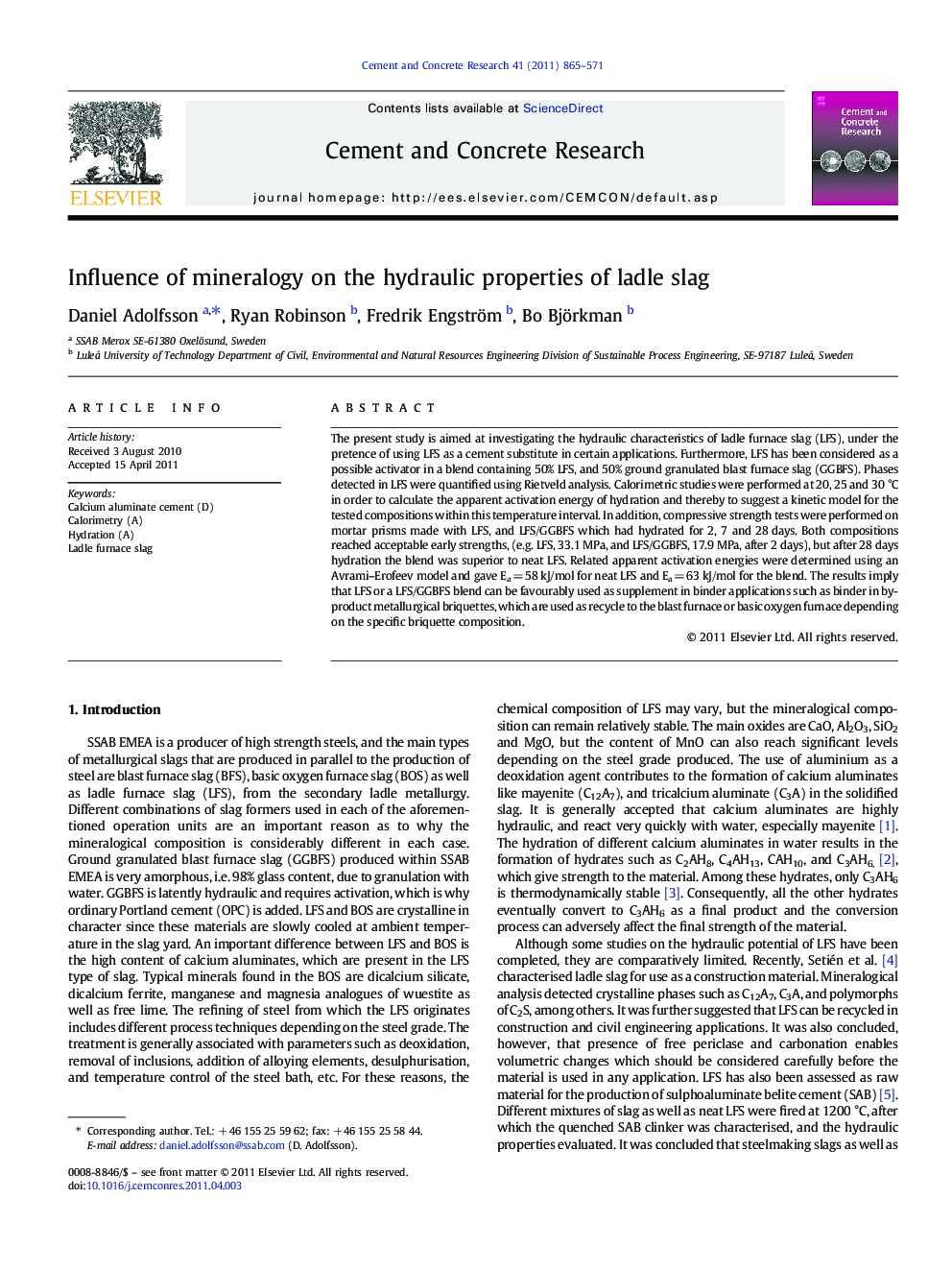| کد مقاله | کد نشریه | سال انتشار | مقاله انگلیسی | نسخه تمام متن |
|---|---|---|---|---|
| 1456994 | 989236 | 2011 | 7 صفحه PDF | دانلود رایگان |

The present study is aimed at investigating the hydraulic characteristics of ladle furnace slag (LFS), under the pretence of using LFS as a cement substitute in certain applications. Furthermore, LFS has been considered as a possible activator in a blend containing 50% LFS, and 50% ground granulated blast furnace slag (GGBFS). Phases detected in LFS were quantified using Rietveld analysis. Calorimetric studies were performed at 20, 25 and 30 °C in order to calculate the apparent activation energy of hydration and thereby to suggest a kinetic model for the tested compositions within this temperature interval. In addition, compressive strength tests were performed on mortar prisms made with LFS, and LFS/GGBFS which had hydrated for 2, 7 and 28 days. Both compositions reached acceptable early strengths, (e.g. LFS, 33.1 MPa, and LFS/GGBFS, 17.9 MPa, after 2 days), but after 28 days hydration the blend was superior to neat LFS. Related apparent activation energies were determined using an Avrami–Erofeev model and gave Ea = 58 kJ/mol for neat LFS and Ea = 63 kJ/mol for the blend. The results imply that LFS or a LFS/GGBFS blend can be favourably used as supplement in binder applications such as binder in by-product metallurgical briquettes, which are used as recycle to the blast furnace or basic oxygen furnace depending on the specific briquette composition.
Journal: Cement and Concrete Research - Volume 41, Issue 8, August 2011, Pages 865–871